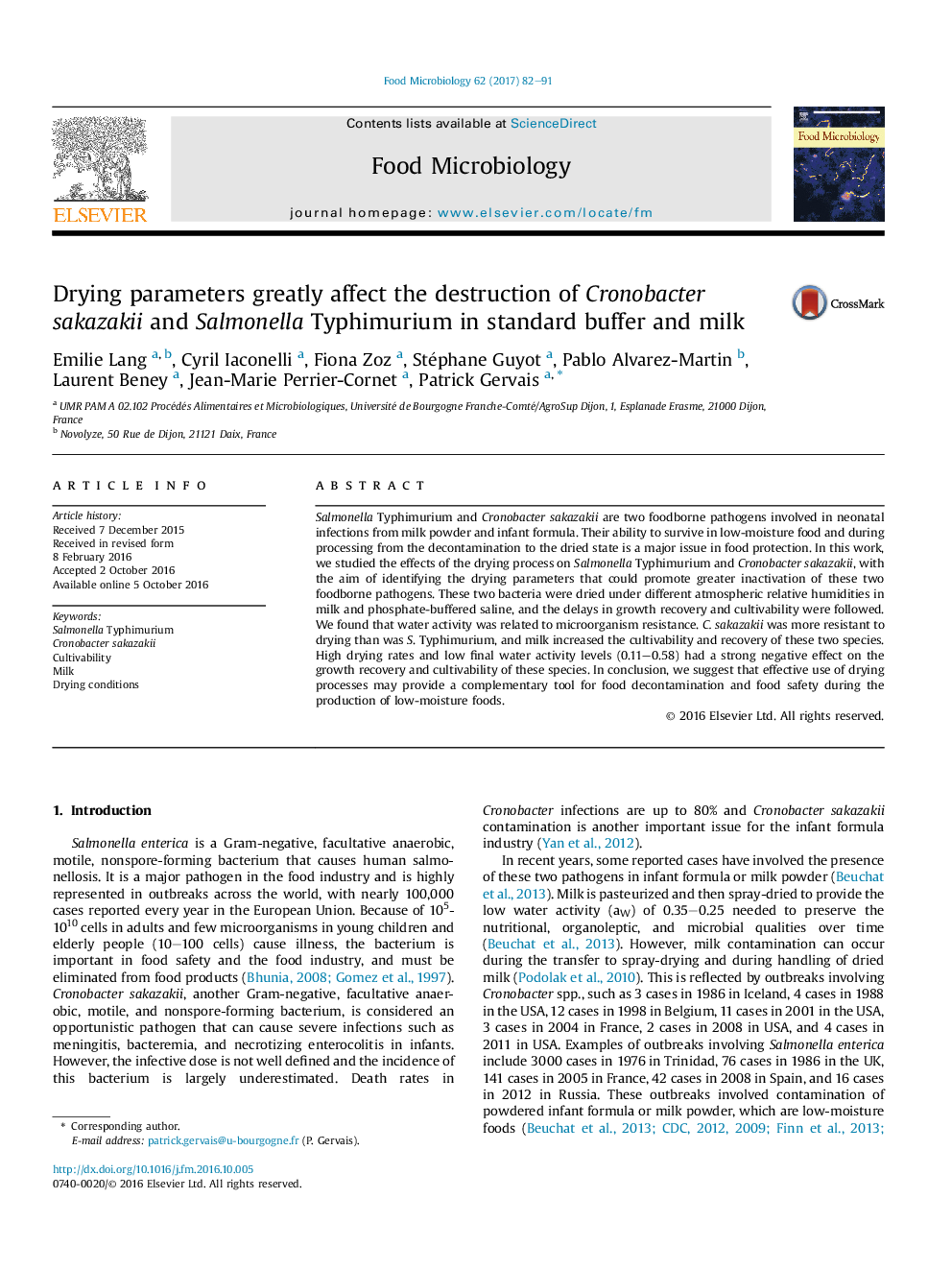| Article ID | Journal | Published Year | Pages | File Type |
|---|---|---|---|---|
| 4362537 | Food Microbiology | 2017 | 10 Pages |
•The effects of drying conditions on both bacteria were evaluated.•Initial drying rate greatly influenced the survival of foodborne pathogens.•Final water activity level softly influenced the survival of foodborne pathogens.•The food–pathogen pairing was a main parameter affecting the drying efficiency.•This work suggests that drying may be a supplementary tool to ensure food safety.
Salmonella Typhimurium and Cronobacter sakazakii are two foodborne pathogens involved in neonatal infections from milk powder and infant formula. Their ability to survive in low-moisture food and during processing from the decontamination to the dried state is a major issue in food protection. In this work, we studied the effects of the drying process on Salmonella Typhimurium and Cronobacter sakazakii, with the aim of identifying the drying parameters that could promote greater inactivation of these two foodborne pathogens. These two bacteria were dried under different atmospheric relative humidities in milk and phosphate-buffered saline, and the delays in growth recovery and cultivability were followed. We found that water activity was related to microorganism resistance. C. sakazakii was more resistant to drying than was S. Typhimurium, and milk increased the cultivability and recovery of these two species. High drying rates and low final water activity levels (0.11–0.58) had a strong negative effect on the growth recovery and cultivability of these species. In conclusion, we suggest that effective use of drying processes may provide a complementary tool for food decontamination and food safety during the production of low-moisture foods.
